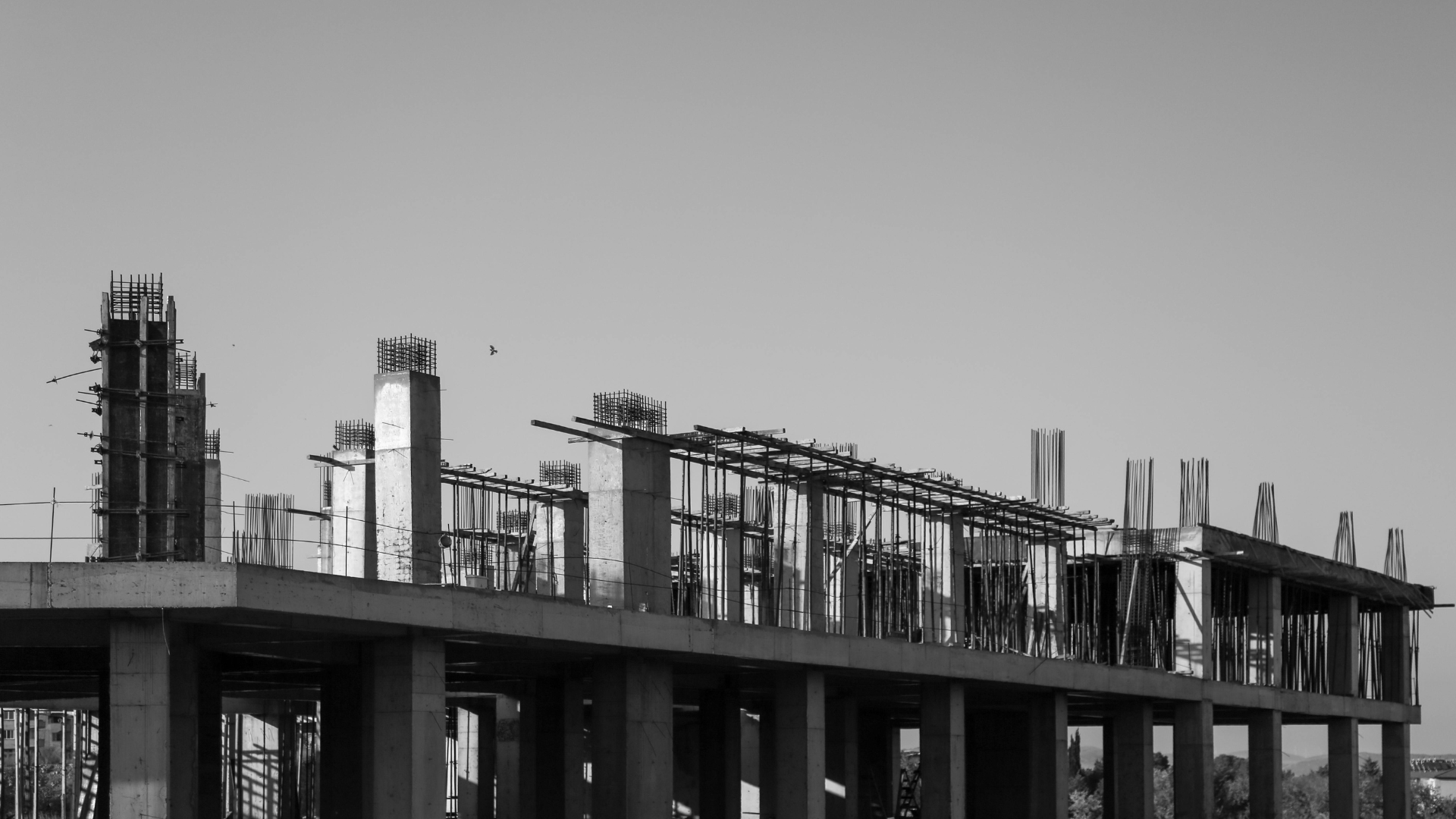Audio overview: Listen & Learn
From large commercial builds to residential remodels, demand in the construction industry continues to grow. But there’s one thing holding many projects back: people.
Skilled labor is increasingly difficult to find, and for small to mid-sized construction firms, the labor shortage can result in costly delays and missed opportunities.
If your crews are stretched thin and your project timelines are at risk, this guide is for you. Below, we’ll explore construction labor shortage solutions that help contractors stay productive, competitive, and on schedule.
How to Tackle Labor Shortages in Construction
Struggling to find skilled workers on your construction site? You're not alone; labor shortages are the new pothole in every project. But don’t hang up your hard hat just yet!
Labor challenges aren’t going away, but there are proven strategies to stay ahead of them. Let’s break down what’s driving the shortage and explore real, doable solutions to fill those boots, from smarter hiring practices to tech that helps. And what construction companies can do about it.
Key Takeaways
- Labor shortages in the construction industry are causing disruptions due to aging workers, outpacing demand, the COVID-19 pandemic, and economic volatility.
- Strategies to address the construction workers' shortage include on-the-job training, competitive wages, improved working conditions, the use of technology, and recruiting from non-traditional pools.
- Smart technologies, such as project management software, drones, AR/VR, automation, and AI scheduling, bridge the labor gap and streamline operations.
- Advanced software like Constructionbase streamline operations, manage resources during labor shortages with an all-in-one project hub, smart estimation, and real-time updates.
Why Labor Shortages Are Disrupting the Construction Industry
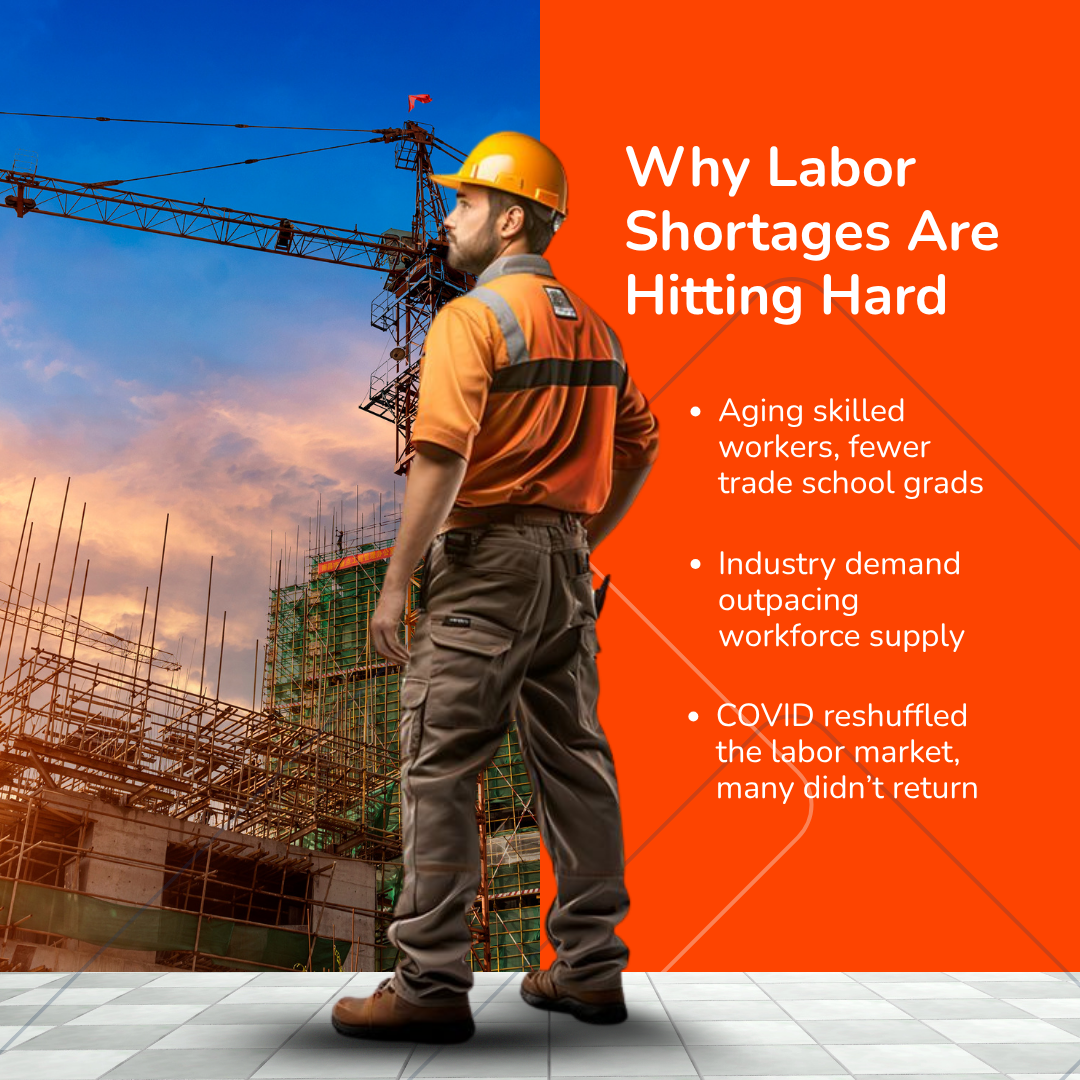
Labor gaps in construction aren’t new, but they’ve reached critical levels. Understanding the root causes is the first step in solving them.
1. Skilled Workers Are Aging Out
With an aging workforce, many contractors are struggling to find replacements before key skills retire from the industry. The construction labor force participation rate is declining, and younger workers aren’t replacing them at a fast enough rate.
Fewer students are entering trade schools, and the pipeline of certified electricians, plumbers, and framers is drying up. This widening gap leaves contractors looking to fill roles.
2. Demand Is Outpacing Supply
The industry has grown at about 5% per year recently, with expectations to accelerate to 6–7% per year by 2030. However, 41 percent of the current US construction workforce is expected to retire by 2031. (McKinsey)
Recent labor statistics show a consistent rise in unfilled construction roles despite growing demand. Construction job openings are at historic highs, yet many go unfilled due to a lack of trained applicants.
3. COVID and Economic Volatility
The pandemic triggered a mass workforce reshuffle. Many workers left construction altogether due to instability, health risks, or better pay in other sectors.
Combined with economic uncertainty and rising wages, the construction industry is facing a growing skills gap that threatens to compromise project timelines and costs.
Explore the full benefits of integrating construction software into daily operations.
Practical Solutions to the Construction Labor Shortage
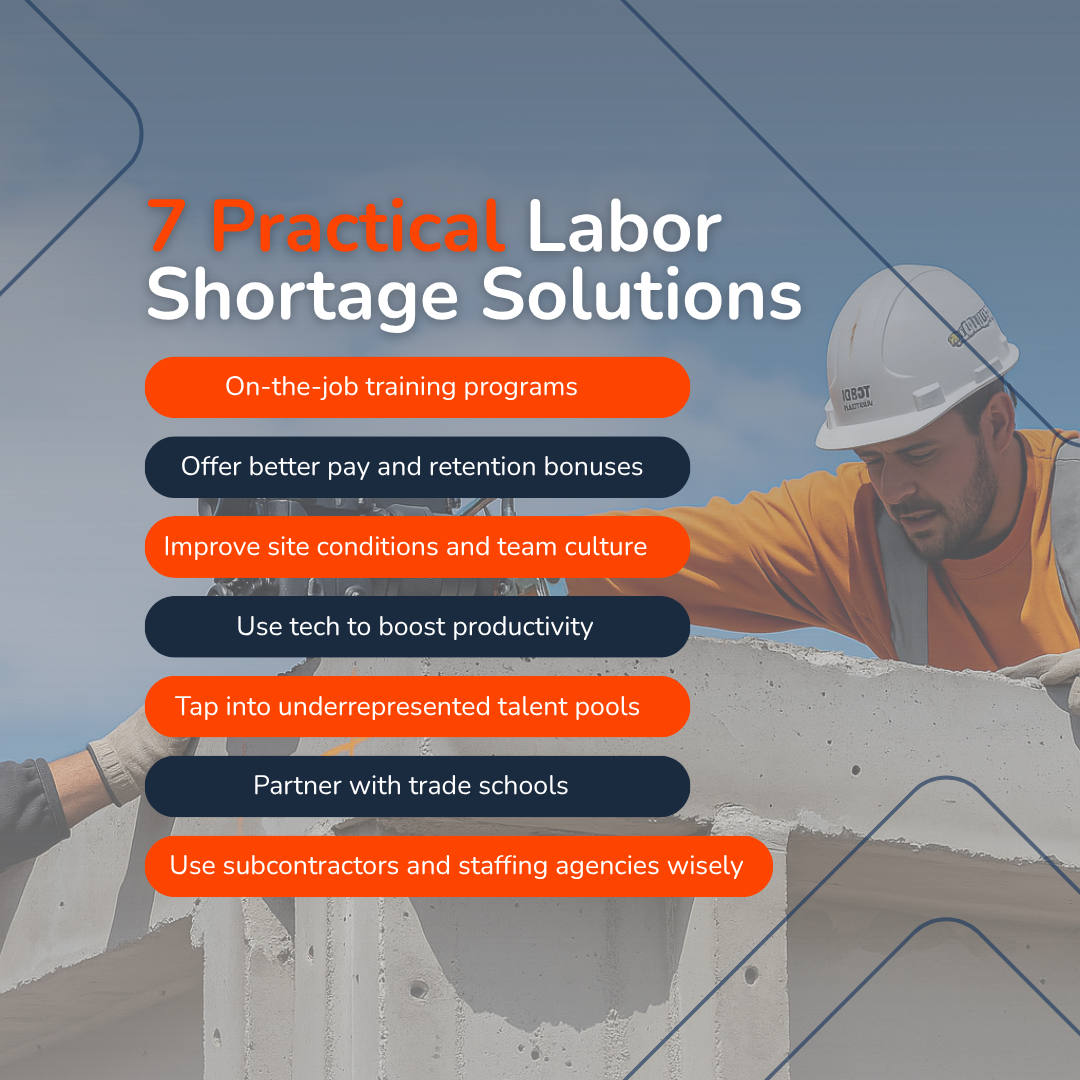
Here are hands-on strategies you can use to strengthen your workforce and keep your construction projects moving.
1. On-the-job training programs
There is a rapid decline in skilled construction workers due to a decrease in enrollment in trade schools.
Waiting for qualified workers to walk in the door? Train your own. Build internal programs to upskill junior staff or cross-train existing employees. Not only does this fill gaps more quickly, but it also boosts loyalty and reduces turnover.
2. Offer Competitive Wages and Incentives
Money talks, especially when there is a skilled labor shortage. Review your compensation against industry benchmarks and consider performance bonuses, retention rewards, or even signing incentives. Skilled tradespeople often have multiple offers. Don’t lose out over a few dollars per hour.
3. Improve Working Conditions and Culture
Construction jobs are tough. By offering safe work sites, clear communication, and respectful leadership, you create an environment people want to stay in. A strong culture isn’t just lovely to have. It’s a retention tool.
4. Use Technology to Reduce Labor Dependency
The worker shortage isn't just about numbers; it's about having the right skill sets on-site when they’re needed most.
Construction management software, drones, and automation tools reduce manual workload, increase accuracy, and boost job site productivity. With the right tech stack, you may need fewer workers to achieve more.
5. Recruit from Non-Traditional Talent Pools
Look beyond the usual applicants. Veterans, women, second-career workers, and immigrants often bring valuable skills but are overlooked. Proactively reaching out to these groups can uncover untapped potential.
6. Build Partnerships with Trade Schools & Apprenticeship Programs
Forge relationships with vocational institutions and training centers to enhance your professional network. Sponsor apprenticeships, offer job-shadowing days, and create clear career paths. Students are more likely to join companies they know and trust.
Partnering with associations such as Associated Builders and Contractors can expand your access to skilled labor programs and pre-qualified apprentices.
7. Use Staffing Agencies and Subcontracting Strategically
Don’t try to do everything in-house. Specialized subcontractors and staffing firms can provide short-term help without long-term commitments. Just ensure you vet partners for quality and compliance.
Check out our step‑by‑step guide to implementing construction management software.
How Technology Can Bridge the Labor Gap
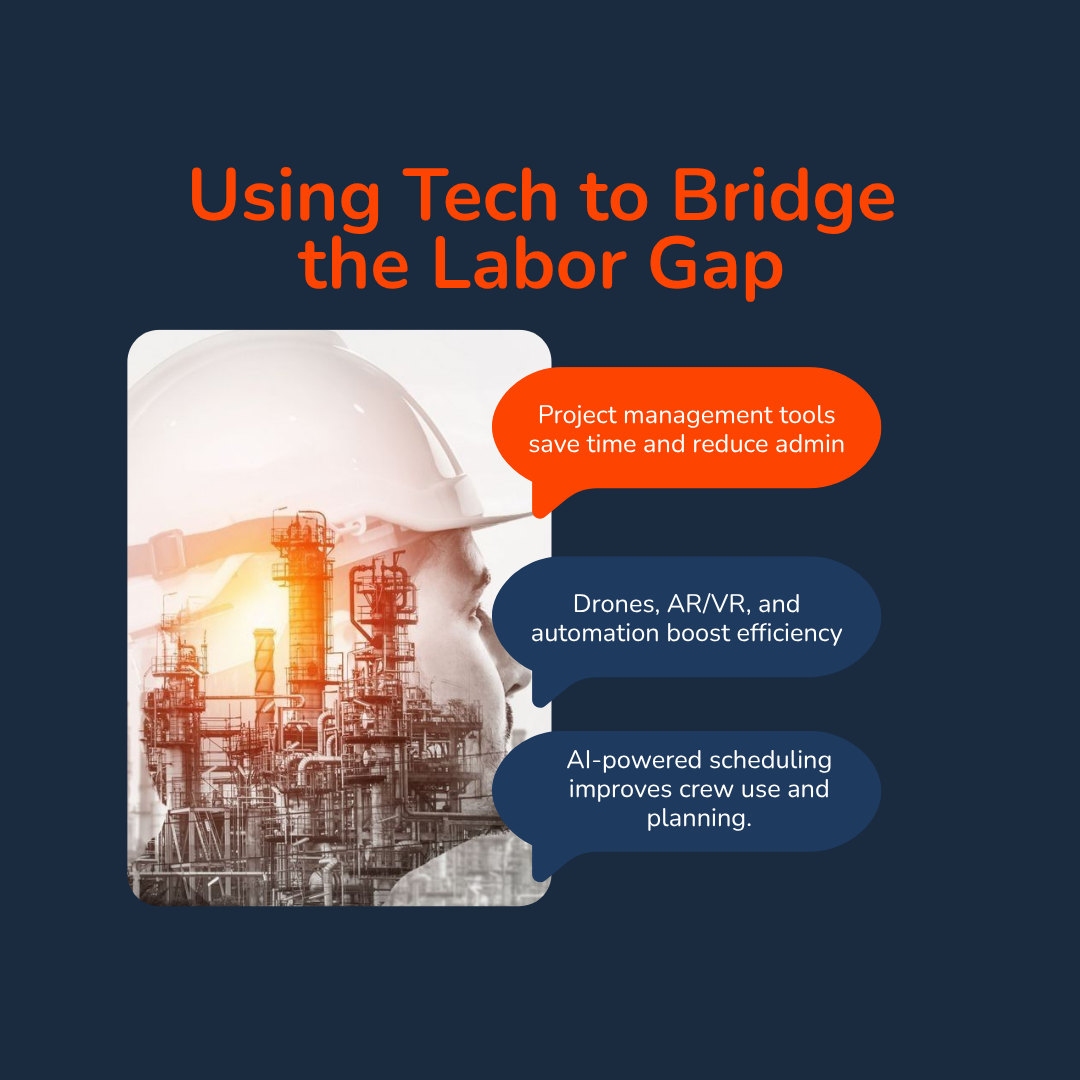
Smart tech helps you do more with less and helps retain the workers you have.
1. Project Management Software to Streamline Operations
Tools like Constructionbase centralizes schedules, budgets, communication, and documentation. This reduces admin time and errors, freeing up skilled labor for actual building tasks.
2. Drones, AR/VR, and Site Automation
Drones assist in site surveying, AR/VR helps with safety training, and automation tools reduce repetitive labor. These innovations make construction sites more efficient and attractive to tech-savvy workers.
3. AI-Powered Scheduling and Resource Planning
AI tools analyze project timelines, team availability, and weather forecasts to suggest optimal schedules. That means fewer last-minute delays and better crew allocation, even with limited staff.
Learn how precise estimating software boosts profit margins.
Building a Long-Term Talent Pipeline

To attract younger workers, firms must focus on flexible career paths, mentorship, and showcasing long-term growth potential.
1. Employer Branding & Social Media Recruiting
Showcase your projects, culture, and employee testimonials on social platforms. Today’s workforce seeks to work for companies that care, communicate effectively, and offer opportunities for growth.
2. Offering Internships, Mentorship, and On-Site Training
Create entry-level pathways through mentorship or paid internships. Many young workers skip construction simply because they’ve never been introduced to it.
Bringing in new workers means not only hiring but also developing their skills through ongoing training.
3. Promoting Construction Careers to Youth & Underrepresented Groups
Young workers are often unaware of the financial and career benefits offered by construction trades, such as plumbing, electrical, and HVAC.
To reverse the trend, construction education needs a stronger presence in schools and community programs.
Partnering with high schools, career fairs, and community groups to raise awareness and promote the benefits of your services. Outreach today can become your workforce tomorrow.
How Constructionbase Helps Construction Firms in Handling Labour Shortages and Improving Efficiency
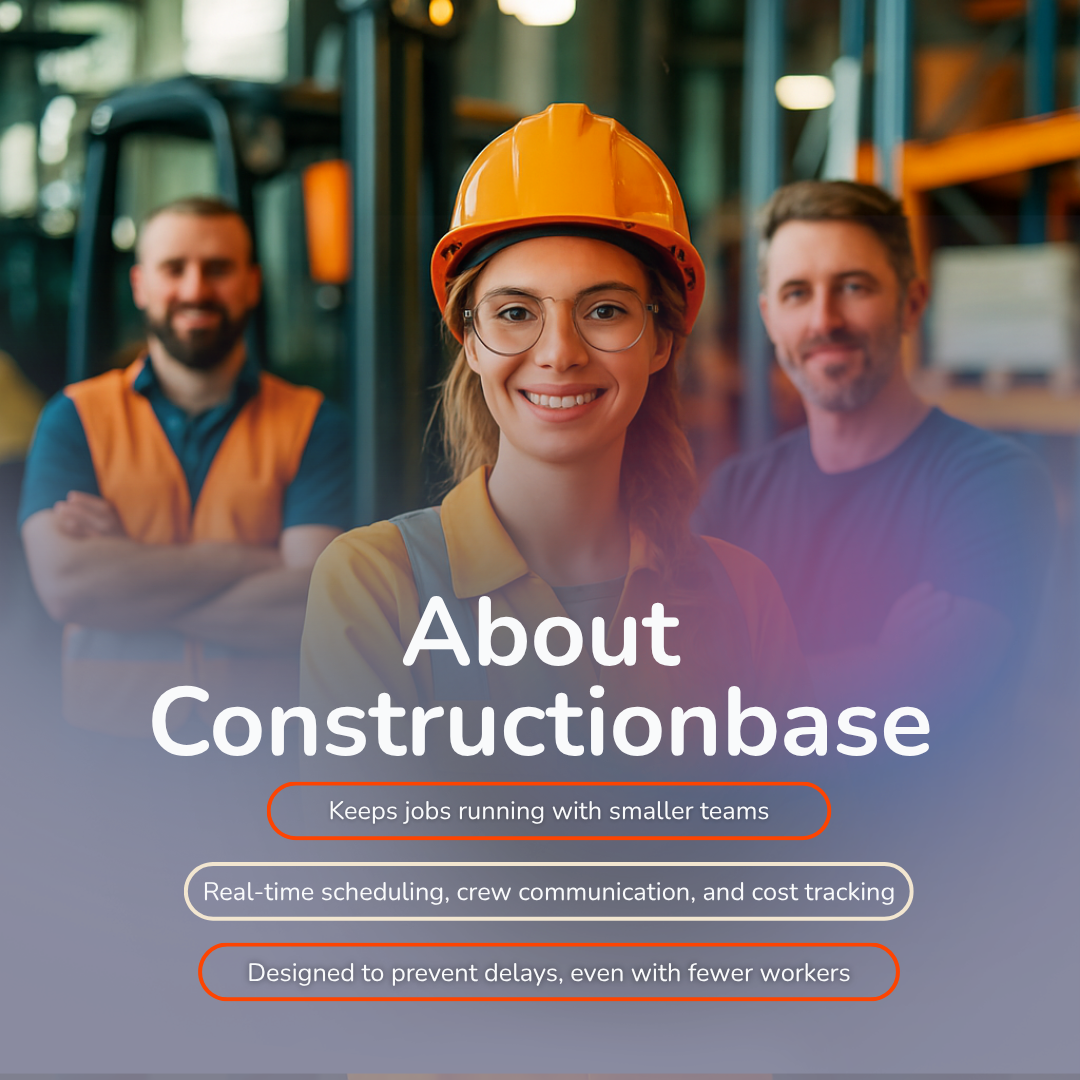
Constructionbase is a powerful construction management solution designed to help companies streamline operations, manage resources effectively, and stay on schedule, particularly during labor shortages.
- All-in-One Project Hub – Plan schedules, assign crews, track budgets, and store documents. Everything lives in one easy dashboard.
- Smart Estimating & Cost Tracking – Generate quick, accurate takeoffs and estimates, then monitor expenses in real-time with built-in accounting tools.
- Live Updates from the Field – Teams can log hours, upload photos, and flag issues using the mobile app, keeping everyone on the same page.
- Automation That Saves Time – Receive alerts for low inventory, equipment usage, or overdue tasks, ensuring nothing slips through the cracks.
- Flexible & Fully Integrated – Whether you're managing residential builds or commercial projects, it adapts to your workflow and connects with tools like QuickBooks, AutoCAD, and CRMs.
Whether you're managing a team of 5 or 50, Constructionbase provides you with the visibility and control to maintain productivity and avoid project delays, even when your workforce is stretched thin.
Summary
The construction labor shortage isn’t disappearing, but you don’t have to let it slow down your business.
From investing in training and improving work culture to using smart tech and expanding your hiring strategy, there are real, practical solutions available.
Combine short-term fixes with long-term planning, and your firm will be well-positioned to thrive, regardless of how tight the labor market becomes.
About Constructionbase
Facing labor shortages in construction?
Book a demo with Constructionbase today and see how smart scheduling, job site efficiency, and better resource management can help your projects move forward even with limited labor.
FAQs
1. How do small construction firms compete for skilled labor?
By offering competitive pay, clear growth paths, and a positive work environment, small firms can attract and retain top talent, even without large corporate budgets.
2. What are some low-cost ways to improve workforce retention?
Recognition, clear communication, training opportunities, and a safe, respectful work environment go a long way without requiring significant financial investment.
3. How does construction technology reduce labor needs?
Tech tools reduce manual errors, automate routine tasks, and enhance coordination, enabling you to accomplish more with fewer personnel on-site.
Have questions or need personalized advice?
Talk to an Expert Today and let our construction specialists guide you to success.







